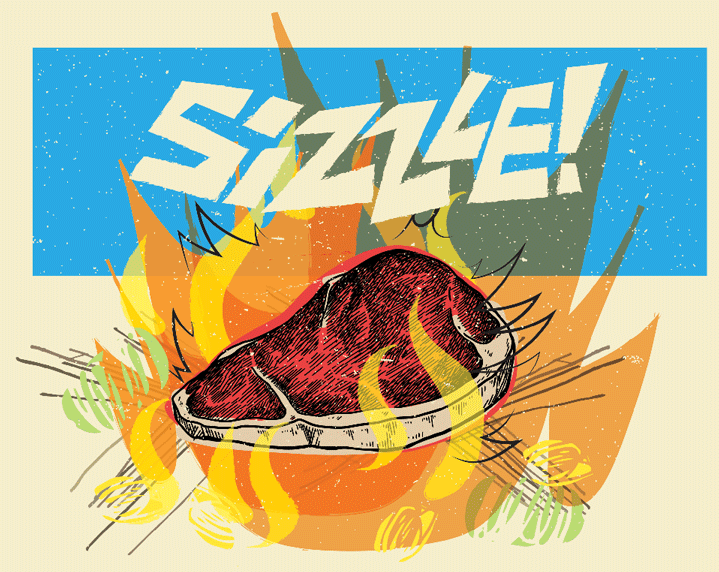How to Bring Some Sizzle to Your Drip Campaigns
Reaching college prospects for enrollment marketing is a young man’s game—literally.
It takes time, the right communication channels, multiple touch points and a near-insane level of planning and strategy. Here in Ad Land, you might know this idea by its common name: A drip campaign.
The Student-Steak Paradox
The combination of drip campaigns and college enrollment marketing are a lot like a raw piece of meat and an open flame. They’re made for each other. However, each requires expert techniques to create a finished product that’s irresistible.
What’s more, if you gathered a panel of experts on each topic, they’d argue for days about the best method to execute that product. In the end, they’ll agree on a few common attributes that make the product great, and will never fall out of fashion.
With the steak, those classic attributes are a crispy, brown, caramelized crust and an inside that’s tender and juicy.
Higher Ed enrollment marketing is a bit more nuanced, but it has its own set of classic attributes. These are things like (but not limited to):
- Concepts that are innovative and design that’s unique and eye-catching
- Engaging messaging with clear call-to-action statements
- Eliciting positive emotions from prospects
- Conveying the idea of a rich college experience and a great education
- Qualifying prospects and moving them toward the enrollment
Modern Methods or Conventional Wisdom?
A drip campaign is a great vehicle for moving prospects down through the enrollment marketing funnel. Here at PLAY Creative, we believe that funnel should be a timeless framework rather than a checklist of different media.
This allows us to modify our drip campaigns along with changing times and speak to prospects the way they want to be spoken to.
The execution is where it gets tricky.
Most people would agree that dangling a raw, unseasoned hunk of beef over a fire by a dirty stick isn’t the best way to cook a steak anymore. Similarly, the days of expecting high school-age kids to show up for campus visits on their own accord are (mostly) behind us. Cooking methods are more sophisticated and the college advertising world is a whole different ball game.
Like the higher ed enrollment funnel, a successful drip campaign is structurally similar to its predecessors. It just looks a little different.
The New Look
You have to be able to adapt alongside changing times. Take social media, which was barely blip on the radar of marketing in the late aughts (and not just for colleges). Within five years, social media campaigns are a standard assumption in college marketing. Fast forward to 2018 where today’s college prospects—right in the heart of Gen Z—spend up to 11 hours(!) on social media every day.
But it’s not enough to just meet prospects where they live. You need to speak to your audience in ways that resonate with them.
Two decades ago, schools took a straightforward approach to marketing that focused on lots of information and in-person marketing (think college fairs) without the Internet. Marketing to Millennials came with a heavy emphasis on experience and relationships thanks to prospects being able to instantly access any information about schools online. As we marketers turn our attention to Gen Z, successful college marketing focuses on a student’s purpose and social values rather than just experiences or curriculum information.
Similarly, attitudes of Gen Z are changing when it comes to how to create career success. Gen Z sees fewer barriers to entry to a successful career, which should have a huge impact on how colleges position themselves.
Low and Slow
If this strategy sounds like an extremely in-depth endeavor and a marathon effort—it’s because it is. But that’s what it takes to successfully find college prospects and move them toward enrollment in your college.
Like all advertising, we need to be hyperaware of the audience and their preferred media channels to pull off a successful drip campaign.
The last thing you want is to serve a spit-roasted hunk of meat to someone who’s expecting a perfectly seared mignon—literally or figuratively.

